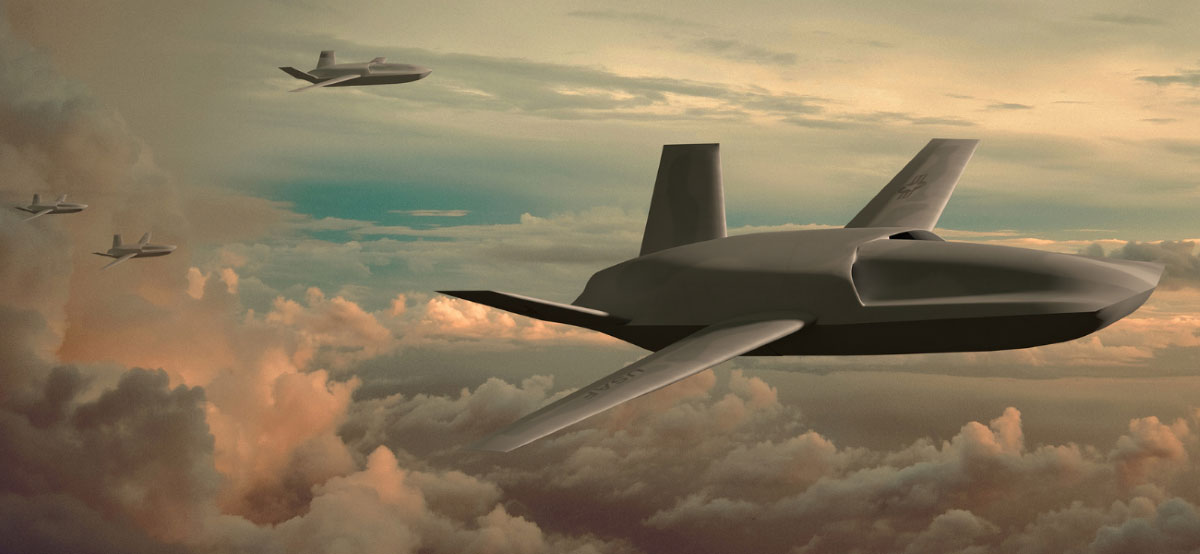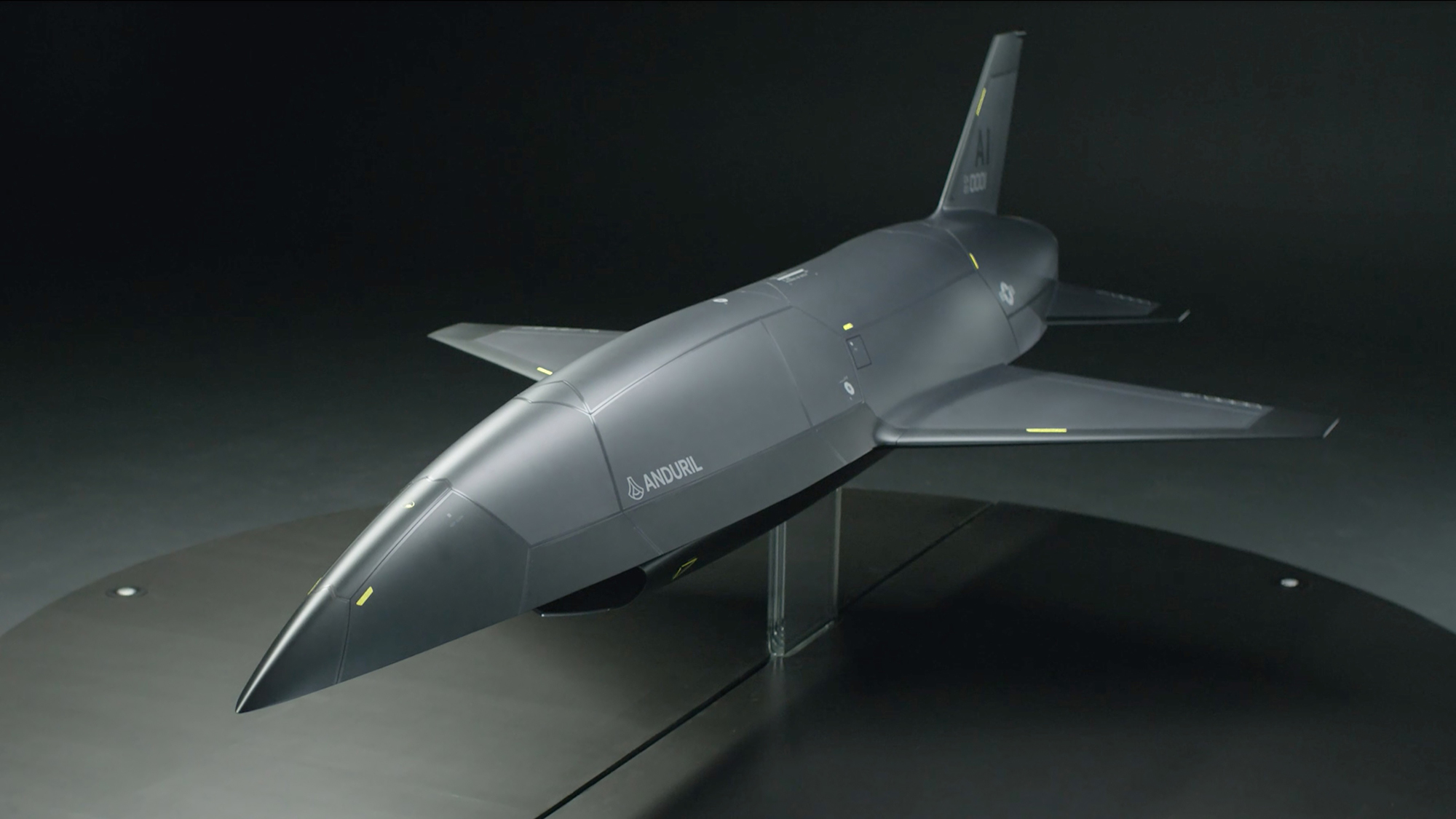General Atomics Aeronautical Systems, Inc. (GA-ASI) has begun building its first drone for the US Air Force’s Collaborative Combat Aircraft (CCA) program, leveraging components from the MQ-9 Reaper to accelerate development.
Pakistan’s JF-17 Gets Nuclear Capability? US Report Says PAF Arms ‘Thunder’ With RAAD Nuke Missile
This announcement was made by Mike Atwood, Vice President of Advanced Aircraft Programs at GA-ASI, in the latest episode of The Merge podcast, released on June 29. The podcast also featured Diem Salmon, Vice President of Air Dominance and Strike at Anduril, discussing the CCA program.
The Merge is hosted by Mike Benitez, Director of Product for Artificial Intelligence at Shield AI, which is involved in the US’s Defense Advanced Research Projects Agency’s (DARPA) Air Combat Evolution (ACE) program — a key contributor to the CCA initiative.
GA-ASI and Anduril are currently in the initial phase of the CCA program, known as Increment One, after being selected by the Department of the Air Force in April. Both companies are receiving funding for detailed designs, manufacturing, and testing of production-representative test articles.

Atwood stated that GA-ASI was assembling its first CCA. He emphasized the company’s ability to move swiftly from contract award to aircraft assembly in less than 24 months. He attributed this rapid progress to General Atomics’ extensive experience in drone development and production.
Atwood also pointed out that they had a “hot production line” where they could swap out an MQ-9 for a Collaborative Combat Aircraft. Using Reaper parts from their stockrooms, they constructed the first CCA aircraft.
General Atomics is also preparing for the next generation of uncrewed aerial systems as part of its work under the LongShot air-launched weapons carrier program.
The company’s CCA concept, dubbed “Gambit,” includes five platforms optimized for various missions, built around a common core of engine, keel, and landing gear.
Anduril, a newer entrant in the uncrewed aircraft field founded in 2017, is competing with its Fury design. The company acquired Blue Force Technologies and its “Fury” stealthy aggressor drone program in 2023.
Salmon did not disclose specific details about Anduril’s progress with its first CCA prototype. She also mentioned the benefits of having an in-house composite shop, referencing Anduril’s acquisition of Blue Force Technologies, which specializes in carbon fiber composite manufacturing. Salmon also stressed that reaching the first flight milestone was a key goal for Anduril.
Challenges Associated With The Program
The Collaborative Combat Aircraft (CCA) initiative is aimed to provide the US Air Force with “affordable mass” to counter the sophisticated and growing threat from China.
Because the US Air Force is unable to manufacture enough manned aircraft or train an adequate number of pilots to overpower a peer adversary, CCAs are designed to address this shortage.
This program envisions a new approach to combat, leveraging the benefits of unmanned platforms to achieve greater operational scale.
There are ongoing discussions about the performance, capabilities, costs, and production challenges associated with the CCA program’s initial phase.
The first generation of CCAs will primarily carry additional munitions for manned fighters like the F-35, F-22, and the upcoming Next-Generation Air Dominance fighter.
Future iterations of the CCA might take on more complex roles, such as electronic warfare, surveillance, and air-to-air combat. However, their primary function will be to enhance the munitions capacity of existing manned platforms.
The Secretary of the Air Force, Frank Kendall, has stated that the service planned to build between 1,000 to 2,000 CCAs through the mid-2030s, with each costing around $30 million. This cost projection is at the upper end of initial estimates.
Mike Atwood of General Atomics noted the challenge of balancing cost, survivability, and mission capabilities. He mentioned that earlier uncrewed combat air vehicle (UCAV) designs, like the X-47 from Northrop Grumman and X-45 from Boeing, were not cost-effective for large-scale deployment.
The focus shifted to smaller designs like the XQ-58 Valkyrie by Kratos, but it was too small. In the last six years, the US Air Force, in collaboration with other military branches and DARPA, has investigated different drone and autonomous technologies.

Despite advances, questions about autonomous capabilities and trust remain crucial for the CCA program. Atwood discussed early attempts to control uncrewed systems using tablets, which proved challenging for pilots.
He noted the need for CCAs to intuitively support the fighter’s intent, whether for ingress, egress, shooting, jamming, or operating in emissions-controlled states, without adding to the pilot’s workload.
Atwood also highlighted the importance of CCAs acting as extended sensors and weapons for the pilot. This would enhance their capabilities without the pilot worrying about fuel, weapons, and range.
He stressed the need for self-aware cognitive autonomy, as simpler control methods during training were ineffective. The transition to autonomous systems involves a cultural shift in trusting machines with rules of engagement (ROE).
“Hardest Hitting” Su-34 Fighter Remains Russia’s Top Warplane Despite ‘Staggering Loses’ – Expert
Atwood pointed out that transitioning from testing environments such as the Nevada Test and Training Range to actual combat evaluations was crucial to establishing trust in these systems.
Diem Salmon agreed about fielding and deploying these systems to build trust through experience. She added that extensive training and interaction with the systems were crucial for acceptance.
Atwood suggested that General Atomics’ CCA design could complement Anduril’s Fury, indicating that the Air Force could integrate both systems to operate effectively. This collaborative approach could enhance the overall capabilities of the CCA program and provide a robust response to emerging threats.
The full extent of the CCA Increment One’s final product, which includes specific autonomous and other capabilities, remains uncertain.
However, if the program proves successful, CCAs could help restore the Air Force’s combat strength, which has diminished due to overuse and slower-than-expected acquisition over the past 20 years. Additionally, the program could encourage new companies to enter the Air Force’s industrial base.
- Contact the author at ashishmichel(at)gmail.com




